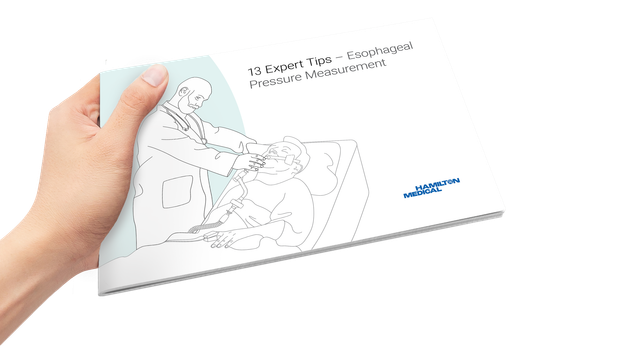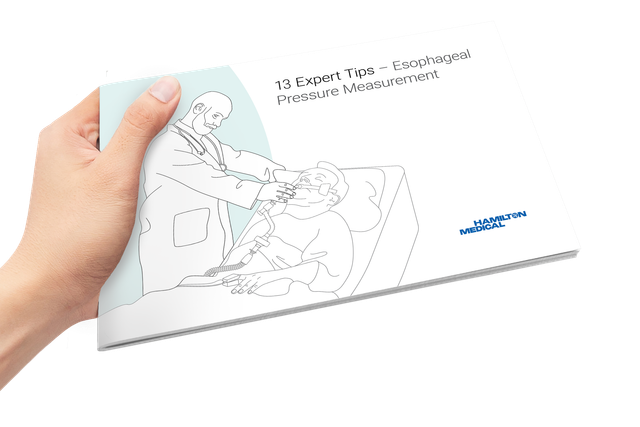If you are looking for in‑depth knowledge about esophageal pressure measurement and transpulmonary pressure monitoring, the e‑book "13 Expert Tips About Esophageal Pressure Measurement" is the perfect resource for you.


Our e-book contains tips and tricks from experts in the field, including information on esophageal balloon catheter placement, optimal balloon filling volumes, and techniques to assess lung recruitability using a transpulmonary low-flow pressure/volume curve (P/V curve).
One of the key topics covered in our e-book is how to use an esophageal catheter in severely hypoxemic ARDS patients. In addition, proper placement of the balloon is essential to obtain accurate measurements, and our e-book includes tips on how to position the balloon correctly.
Additionally, we cover how to perform an occlusion test to check if the balloon is correctly positioned and filled to the optimal volume.
Other tips include:
Use a recruitment maneuver to reach the upper limit of transpulmonary pressure
Set PEEP to result in positive end-expiratory transpulmonary pressure
Avoid negative end-expiratory transpulmonary pressure
When NOT to use esophageal pressure measurement and when to use with caution
Measure transpulmonary driving pressure with end-inspiratory and end-expiratory occlusions
Keep tidal transpulmonary pressure variations under 10 cmH2O
Use the same device for airway and esophageal pressure monitoring
Minimize ventilator-induced lung injury with venovenous ECMO
By downloading the e-book you will gain valuable insights and tips from experts in mechanical ventilation and esophageal pressure measurement.
To receive the e-book in your inbox, just fill out the form below.